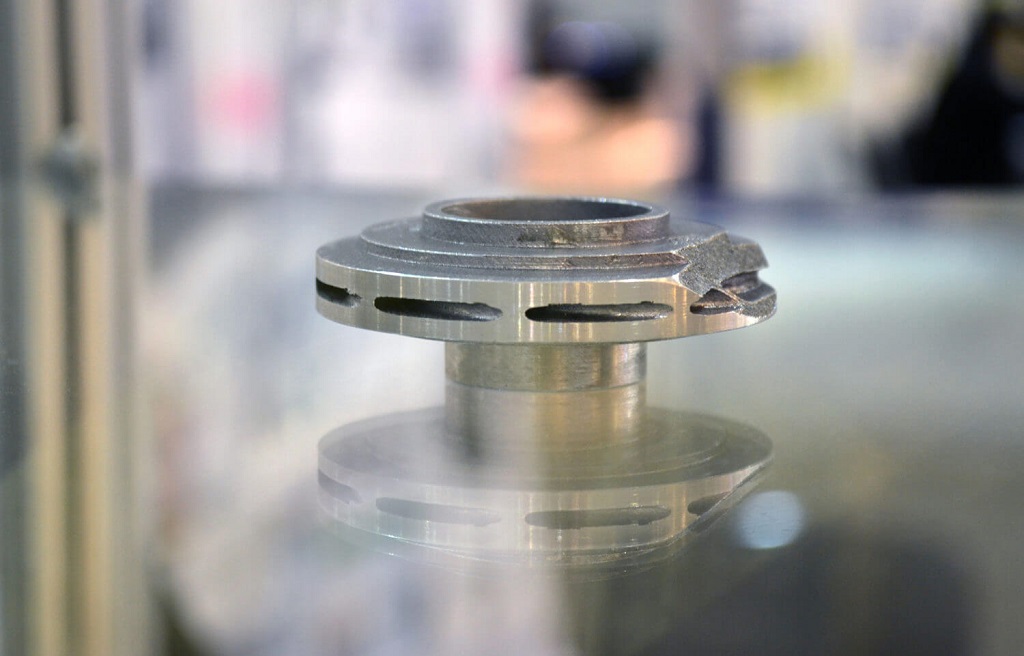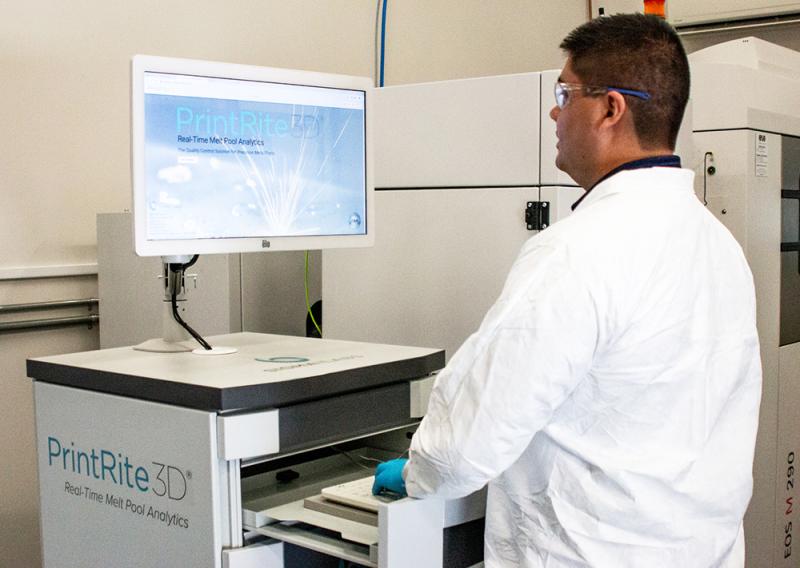
Sigma Labs has been hard at work with its quality control solutions for metal 3D printing: the company’s CEO fills us in on major advances.
PrintRite3D, Sigma Labs’ real-time computer aided inspection (CAI) software, targets advanced capabilities in additive manufacturing. The New Mexico-based company has been working for a decade now to offer better quality assurance in these young manufacturing processes, and in 2020 we’re definitely seeing some fruits of these labors.
I caught up recently with Mark Ruport for a discussion of two new patents, more work toward commercialization of quality assurance solutions, and the importance of collaboration to a serial production future for industrial 3D printing. At the time of our conversation, Ruport was the Executive Chairman of Sigma Labs; he has since also added the titles of President and CEO of the company.
Sigma Labs Updates
“We are defining quality standardization for quality assurance,” Ruport told me in opening as we spoke at the end of April. “We have been busy the last three months, and are now seeing the culmination of a lot of work from a lot of people over the last few years.”
Sigma Labs is a software company focused on metal 3D printing, he noted. The company spent much of 2019 working to commercialize their technology, testing with companies including Airbus, Baker Hughes, and the Fraunhofer Institute. They worked on validation operatives with organizations including ANSYS and DARPA.
“2020 is the year it’s been commercialized and we’re taking it to market as hard as we can,” Ruport said.
Among the areas we discussed are new patents, the end users targeted for PrintRite3D, use in R&D and universities “developing tomorrow’s manufacturing experts”, software OEMs including Materialise, and ongoing work with hardware OEMs (“We hope to announce some joint partnerships in the next few months”).
Sigma Labs Patents
Recently, the company was awarded two new US patents for PrintRite3D, bringing their IP portfolio to 11 issued patents and 24 patents pending — all geared toward “accelerating the transition of AM to serial production.” The newly awarded patents, awarded in March, are:
- U.S. Application No.: 16/234,333 Titled: Systems and Methods for Additive Manufacturing Operations
- U.S. Application No.: 16/282,004 Titled: Systems and Methods for Measuring Radiated Thermal Energy During an Additive Manufacturing Operation
These new patents are “very important to us,” Ruport said.
“One is relatively broad, and the other is very specific to what we do: measuring thermal energy coming from the melt pool,” he told me. “From signals from thermal energy, we can detect and now predict, through an AI initiative, what type of defect you can expect, where it is, how to classify it, and its size. The production manager sets tolerances based on that particular part, so that patent is very specific to our technology and very important to the IP of our company.”
PrintRite3D Production Series

At the end of March, Sigma Labs introduced the PrintRite3D Production Series as part of its focus on 3D printing for production.
“This allows the production manager at the site to have access to critical metrics, insight, and actionable information during the production process,” Ruport said. “One customer recently said they’re using it more now than before, while working from home. You can manage a build remotely and manage tolerances. When software detects drifting outside tolerance, it can stop the production run, or do whatever they have to do based on where the defect is and what the part is. It’s a big step forward for the company, the Production Series, as it takes us into serial production on multiple machines.”
PrintRite3D is run today on most major commercial metal 3D printers, Ruport added. The mission at Sigma Labs is “to establish PrintRite3D as standard for commercial metal 3D printing,” he said.
That’s an ambitious mission — but one that only motivates the Sigma Labs team.
“We’re the only company to provide a single view across printers, managing the supply chain or multiple printers across a factory, offering a single way of looking at quality across printer types,” Ruport continued.
“One issue with metal 3D printing is consistent quality. With more powders, more manufacturers, more and different lasers, and designs of basically anything you can think of — you take all those variables together and it’s hard to predict what the end quality is going to be. Our quest is to provide that single view of quality across all those variables to be sure the end product meets those original specifications.”
Radical Collaboration
Obviously the additive manufacturing sector is expanding — not only in technologies and processes, but in participants. Collaboration is often a key word, as effective, consistent quality is only achieved through harmony between hardware, software, material, operator, and all other parts of the manufacturing process — and that means close work in the industry and with customers.
“We work in what we call radical collaboration with our customers,” Ruport said. “Collaboration of course is working to mutual benefit; radical collaboration is working for our mutual benefit and the industry’s benefit.”
That is, Sigma Labs is working not just to strengthen its market position, but to strengthen the market itself.
“Anytime we use a powder with a particular design, we learn something, and add to our knowledge base. We hope to share with the broader metal 3D printing industry. As they begin to have different printers, powders, and designs, they can learn from what’s happened in the past and not go through that gauntlet of mistakes in the past. The qualification process for metal products in some industries is very long and tedious — we want to shorten it.”
In its collaboration and partnership efforts, Sigma Labs has recently seen several new introductions, including:
- New reseller in India: Excel3D Advanced Technologies
- Joint sales agreement to begin beta customer commercialization of the integrated PrintRite3D and Materialise Control Platform (MCP) product
- Northwestern partnership to implement PrintRite3D Real-Time Melt Pool Analytics technology
- Contract from Mississippi State University Center for Advanced Vehicular Systems to address engineering challenges facing US mobility industries
Further, Sigma Labs is “working hard with an OEM in Japan to establish a marketplace in Japan,” Ruport added.
“When we look at these advances, expanding reseller/OEM channels, and work with standards organizations, hopefully we’re positioning ourselves for continuous process improvement in additive manufacturing,” he said.
Sigma Labs and COVID-19
Finally, Ruport commented on the current pandemic situation and its impact on the additive manufacturing industry.
“We often hear the topical question about COVID-19 and its effect on 3D printing. Most of what we’ve heard is on the polymer side,” he said.
“Our view is that supply chains today are so rigid and so complex, it causes crisis when something unexpected happens — virus, politics, war, environmental. We’ve seen a shortage of production and parts. What’s going to happen is they’ll shorten the supply chain, move the manufacturing process closer to the end user, do what Amazon did with distribution centers closer to the end user, to get one- and two-day deliveries. We’ll see the move of metal 3D printing around the country, as we’re more able to respond as a country to demands for new products much more readily than we can today. As a country we may give up some margin for these supply chains, and pay it back in convenience and readiness to face that next disaster. I think that will be a big push for metal 3D printing.”
One of the biggest costs Sigma Labs has long faced has been flying out to installations. Obviously during the travel restrictions during the last few months, this hasn’t been possible for this team or any others, really. So the Sigma Labs team joined those looking to do business in new and adapted ways.
“We’ve now invested in headsets with AR and have been mailing these to our customers. Most have never installed a monitoring system like ours. They become our hands, they become our eyes,” Ruport said. “The end result is obvious from our perspective: it saves time, energy, and money. We also get a much more confident customer in tune with how to use and manage our technology. It’s a blessing in disguise we’re taking advantage of, the old ‘necessity breeds innovation’.”
By working on their own with the systems, even with the Sigma Labs team directly interacting with them, the now hands-on customers develop significantly more confidence in working with the new capabilities.
“Instead of a production manager at the site getting grief because it’s down and they have to wait for us to fix it, now he’s getting accolades because he was able to fix it. He’s much more capable and proud of what he can do in his own job, it’s actually a real benefit to the user,” Ruport said.
We closed out our conversation with an anecdote of a recent company-wide conference call among the Sigma Labs team.
When Ruport asked the engineers what they’ve been hearing from customers, one who had been working with a customer in Japan told the story of how he’d heard “sugoi, sugoi” exclaimed in the background as they worked. The interpreter said, “It means ‘amazing’.”
“He was seeing for the first time the layer-by-layer tracking of the metal job he was tracking, picking out keyholes and defects that he never would have seen before. That one word and that one reaction really lifted the whole engineering group,” Ruport said. “We were trying to cross the bridge between features and functions, but once you see the reaction of the end user it becomes much more real.”
Via Sigma Labs
